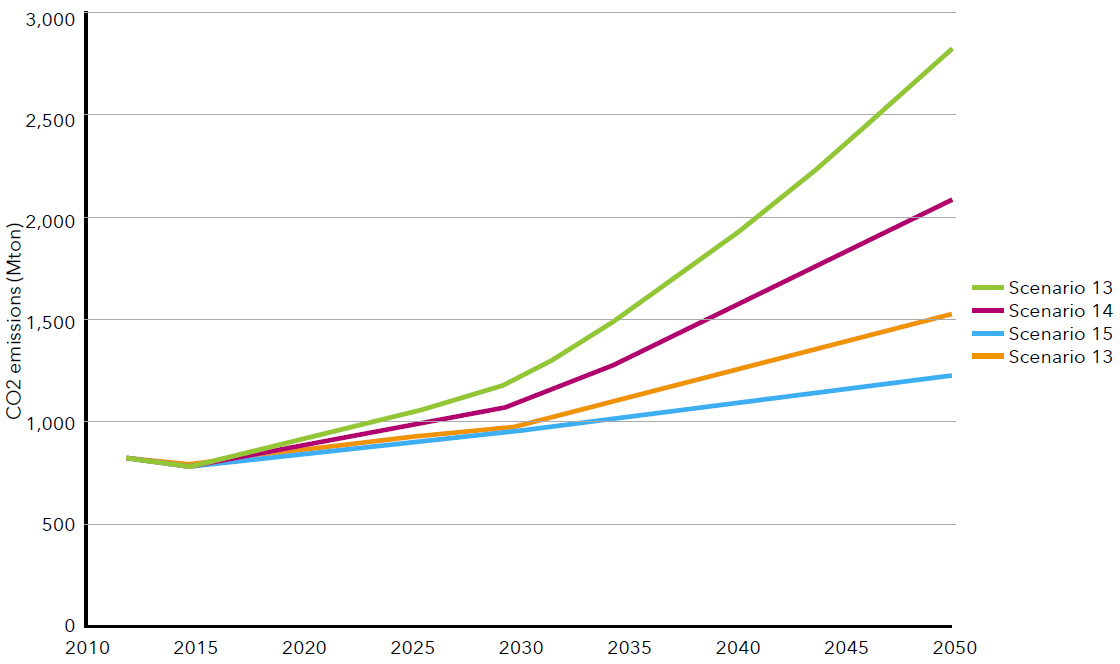 The Paris Agreement adopted by world leaders last December marked a critical turning point in the fight against climate change: a move from action by few to action by many.
The Paris Agreement adopted by world leaders last December marked a critical turning point in the fight against climate change: a move from action by few to action by many.
The historic Agreement sets out a global action plan to put the world on track to avoid dangerous climate change by limiting global warming to well below 2°C, and to pursue efforts to limit the increase to 1.5°C.
As a universal and legally binding agreement, it sends a clear signal to investors, businesses, and policy-makers that the global transition to clean energy is our future and that resources have to shift away from fossil fuels.
The combination of the clear call for global action and the "well below 2°C" goal shows that no part of the economy can be excluded. It is clear, therefore, that CO2 emissions from international aviation and maritime transport should also be addressed as a matter of urgency, particularly as they are expected to increase sharply in the coming years.
INCREASING EMISSIONS FROM SHIPPING
Studies suggest that global CO2 emissions from international maritime transport increased by around 65% between 1990 and 2010. If no further measures are taken, this trend is expected to continue. The third greenhouse gas study by the International Maritime Organisation (IMO), the UN body dealing with international maritime transport, predicts a significant increase in the coming decades. Depending on future economic and energy developments, emissions are estimated to increase by between 50% and 250% by 2050 (see
Figure 1).

Figure 1: Projections of CO2 emissions from international maritime transport (Business as usual scenarios, 3rd IMO GHG study 2014)
Such growth would increase the share of shipping in the global total of CO2 emissions, which today stands at 2.5%. Given the need to reduce global emissions in line with the "well below 2°C" objective, it therefore risks undermining the efforts of other sectors. This clearly underlines the need for the shipping industry to deliver its fair share contribution to the fight against climate change.
Stopping and reversing this alarming growth in shipping emissions is possible. According to the second IMO greenhouse gas study, there is significant untapped potential to reduce emissions by up to 75% by using existing technologies and operational measures. Many of these measures can be described as 'lowhanging fruits' and would be paid for by the resulting fuel cost savings. So taking action on emissions from shipping does not have to lead to significantly higher costs.
IMPORTANT PROGRESS BUT GREATER EFFORTS NEEDED
At global level, the IMO, which started its work on greenhouse gas emissions back in the 1990s, has made some important progress. The Energy Efficiency Design Index (EEDI), which was adopted in 2011 and set CO2 standards for new ships built after 2013 with increasing levels of ambition until 2025, was an important step forward. It is expected to reduce the sector's greenhouse gas emissions by 20% by 2030 compared to a 'business as usual' scenario.
However, bearing in mind the expected growth in global trade and the long life-span of ships, this measure alone will not be enough to ensure that shipping emissions are reduced fast enough to deliver their fair share of greenhouse gas emission reductions, both internationally and in the EU.
The IMO has also discussed market based measures and emissions reduction targets – without any conclusions or decisions to date – as well as the introduction of a global data collection system for fuel consumption, CO2 emissions and energy efficiency. This system is similar to the EU's system for monitoring, reporting and verification of greenhouse gas emissions from ships (EU-MRV), which was adopted in 2015. Discussions under the IMO made substantial progress in 2014 and 2015 and we expect the adoption of a global MRV system under the IMO this year.
FURTHER ACTION AFTER PARIS
The European Commission favours further global action through the IMO. This needs to include a process to consider a specific emissions reduction objective to ensure that shipping contributes its fair share of the efforts required to achieve the objective agreed in Paris. To achieve this, further action such as market-based measures or further operational efficiency standards will also be required. Discussions in the IMO on such measures are expected to be launched soon.
The EU counts on the shipping industry to contribute its share of the reductions required to achieve the objectives defined in Paris. We hope the Paris spirit will guide and inspire the IMO to agree on global measures to reduce emissions from shipping.